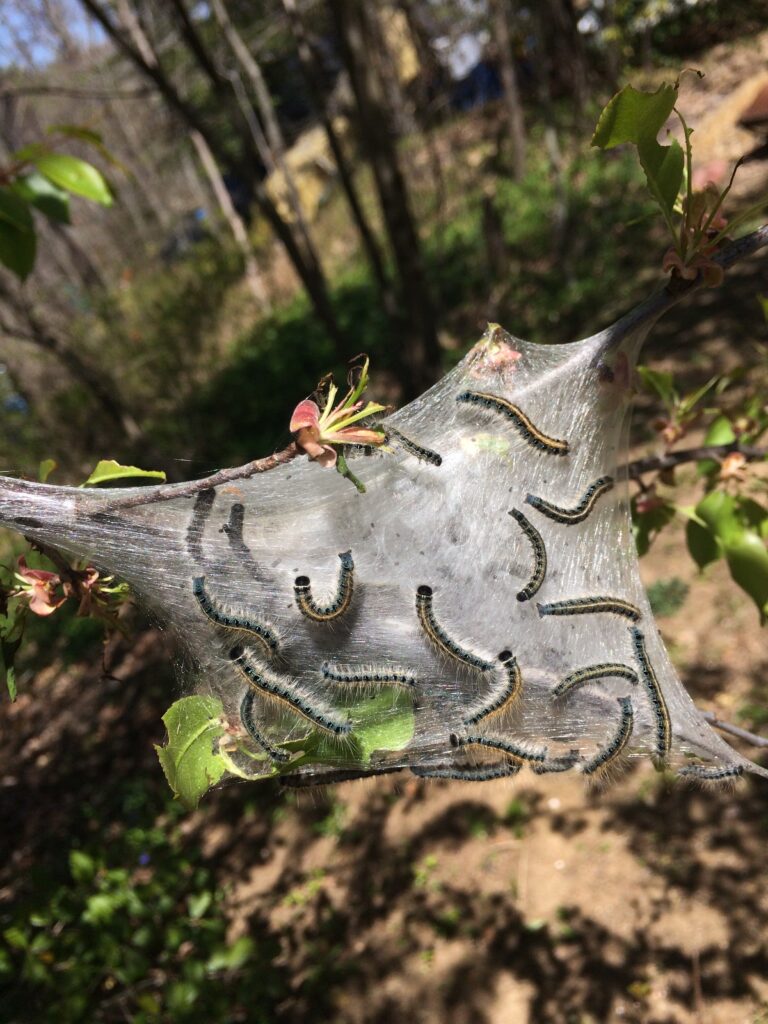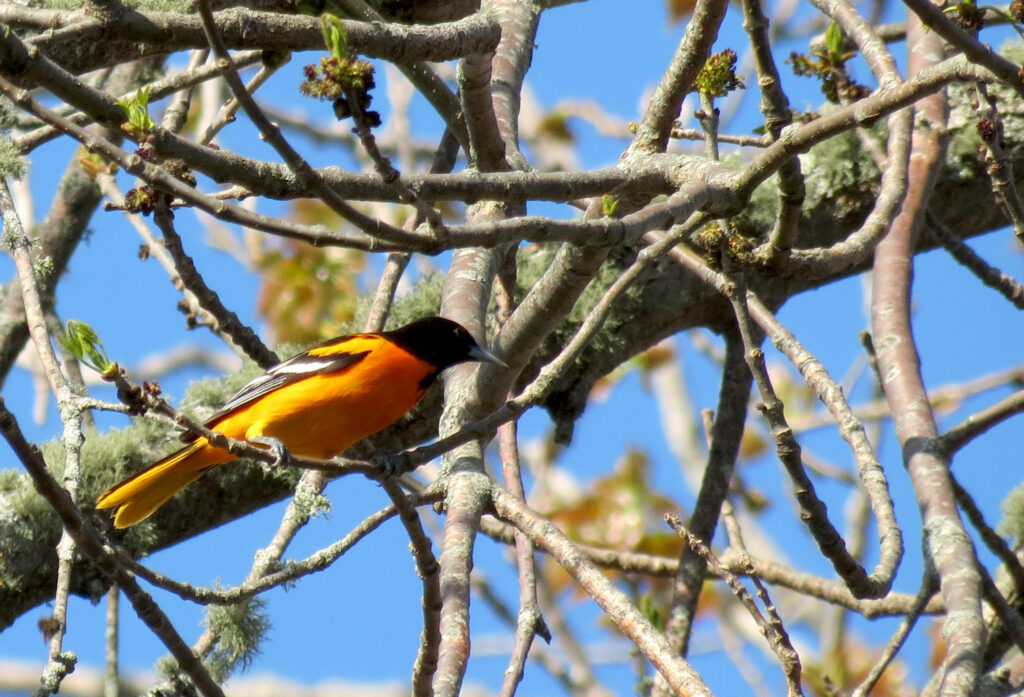Embracing Free Bird Food
As I was driving along the highway this past weekend, I was struck by the number of eastern tent caterpillar tents along the road. It seems like this year is going to be a BIG year for them in Maryland. Worry, not!
You might be called upon by friends, neighbors, and contacts in regards to what to do with these fuzzy ‘pests’. My suggestion? Embrace the free bird food. ![]()

Early season tent caterpillar nest. Photo by K. Wixted
Eastern tent caterpillars and their cousins, mountain tent caterpillars, are native to Maryland. They have boom and bust years which fluctuate with predator populations. This year is a BOOM year. That means you also are going to see tons of these webs all over, particularly on cherry trees but also on maple trees, apple trees, and more. The caterpillars grow in their protective nursery webs which expand over the 6 or so weeks they develop. They then will head out to find their own spot and pupate. ![]() You can read more about that here: https://bugoftheweek.com/blog/tag/tent+caterpillar
You can read more about that here: https://bugoftheweek.com/blog/tag/tent+caterpillar

Almost time to eat! Photo by K. Wixted
During this time, the caterpillars in the web will defoliate leaves on trees. Caterpillars are eating and pooping machines. It’s going to look messy to some, but nature is messy and is resilient. While some see gross webs, I see juicy, protein-packed larvae with some extra hair that are going to feed migratory birds. It’s no coincidence that these webs come out in the spring, at the height of migration/nesting season. Those furry protein logs feed a lot of critters, including Baltimore Orioles and Cuckoos which unzip those webs to get to the tasty treats inside. (Documentation here: Jim McCormac’s Blog). No food? No fuel. Less food? Less babies. It’s simple. ![]()
During 2020, I had a lot of time at home to watch some of the webs more closely from my deck. While I didn’t catch any Orioles dining on the caterpillars, I did watch several insect predators like wasps and assassin bugs attempt to find their way into the webs. You can give predators an advantage by unzipping the webs to allow for easier access. Please consider this as a control option or knocking down the web or pruning the branches (last resort). Pesticides, fire, and brimstone are not necessary. ![]() You can also just enjoy the free food nature has provided.
You can also just enjoy the free food nature has provided. ![]()
Because the big years like this one are cyclic, the predators will get all fat and happy and have a lot of young which will help knock down the caterpillar population next year. This allows the trees to bounce back. People sometimes confuse tent caterpillars with invasive spongy moths. Spongy moths defoliate trees year after year and can kill them over the course of several years. They also DO NOT live in tents. They are not the same as tent caterpillars.

Give orioles and other birds a boost by providing natural foods for them! Photo: K. Wixted